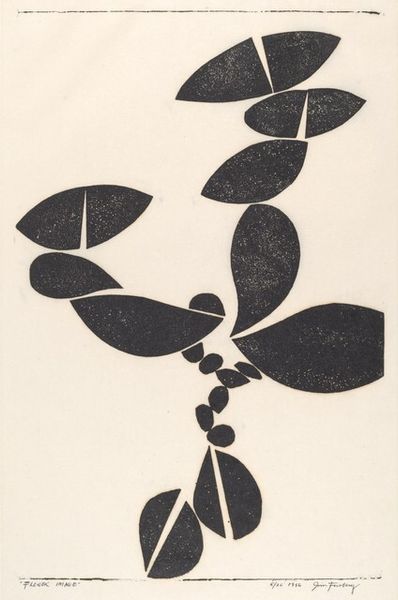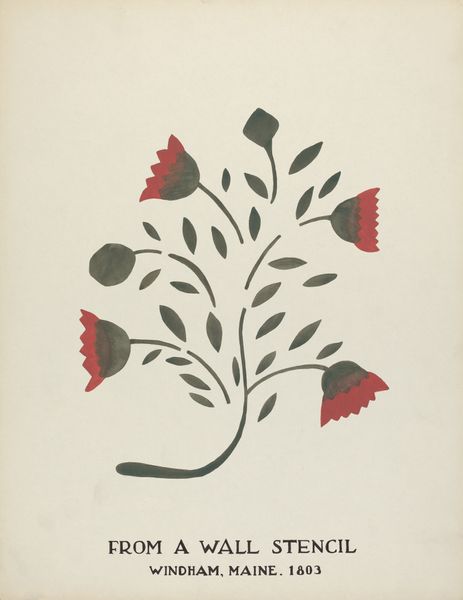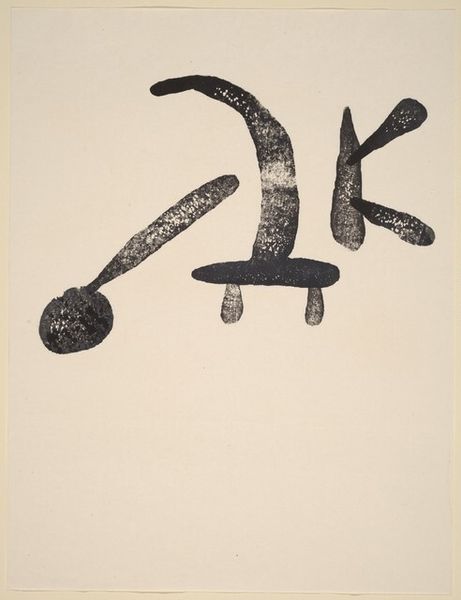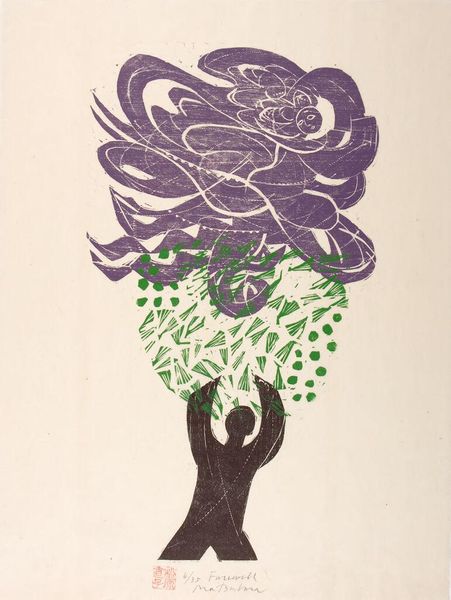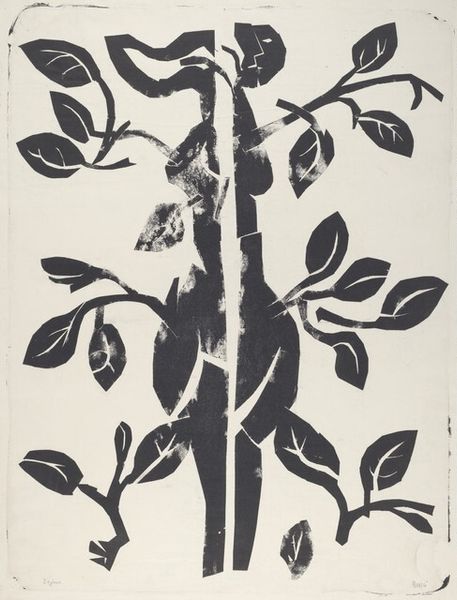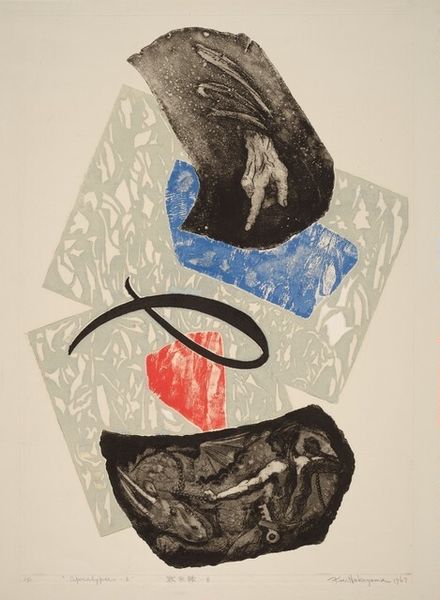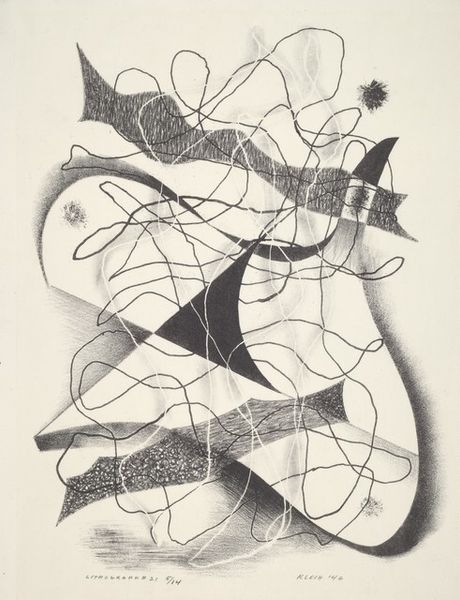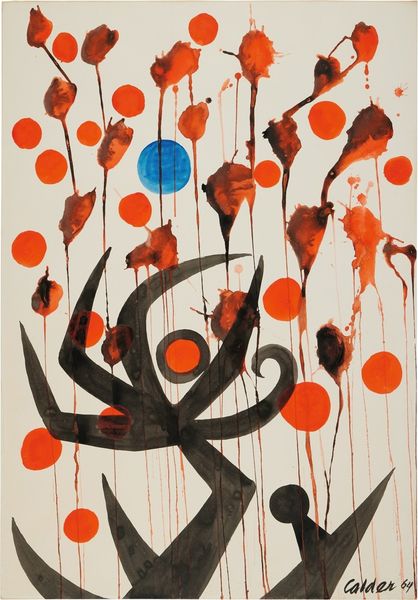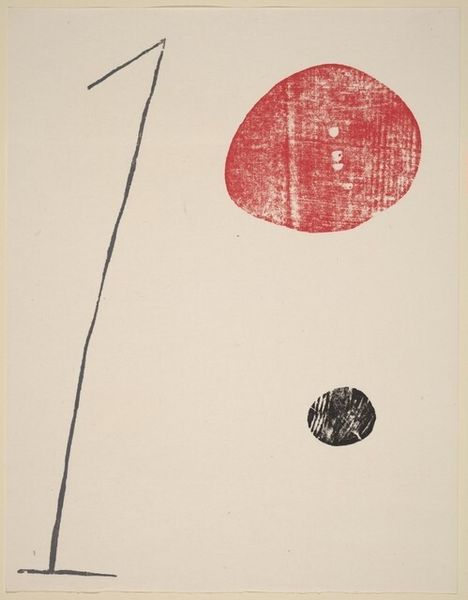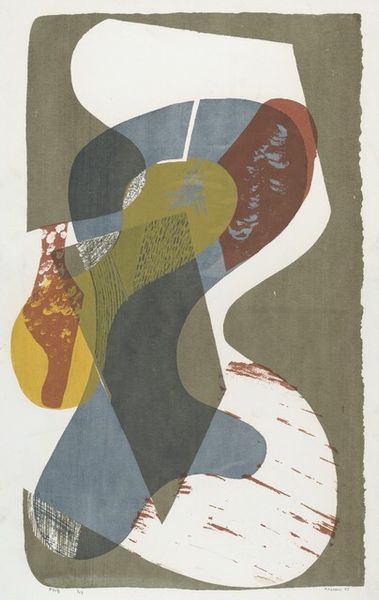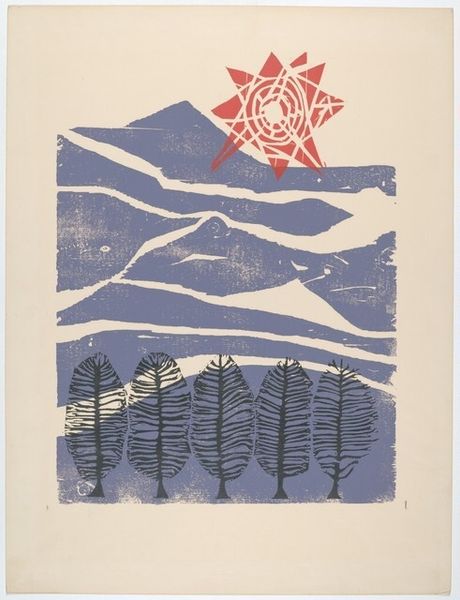
print, woodblock-print
#
organic
# print
#
linocut print
#
woodblock-print
#
organic pattern
Copyright: National Gallery of Art: CC0 1.0
Curator: I’m struck by the joyfulness radiating from this print; a truly bountiful composition in deceptively simple form. Editor: Welcome! Today we're looking at "Fruit Tree", a woodblock print made around 1957 by Charles Knowles. Its simplified imagery belies its complexity, particularly in how the artist employs the organic form. Curator: Organic it is! These repeating red orbs remind us that the fruit, often a symbol of life’s vitality, isn't only presented within a natural setting but elevated to one. Red has a striking presence – quite demanding to our vision. It creates an effect of vibrancy; of heightened experience. Editor: Quite so, but let’s examine the formal elements that structure that vibrancy. Notice the geometric trunk of the tree against the amorphous shape of the fruit clusters, all rendered using the same, subtly textured woodblock technique. This juxtaposition draws attention to both the raw materials and the design elements, resulting in a balanced tension that is so prominent in this print. Curator: And the debris, what do we make of those scattered brown and gold shards under the tree? At a symbolic level they may represent life’s ephemeral quality, remnants, the pieces left when time passes… This connects us with the idea of vanitas and cyclical symbolism of growth, maturity, and decline. Editor: Interesting. I might counter that it brings visual dynamism to an otherwise static form. By contrasting that implied motion with the structured branches and canopy, Knowles created a sophisticated counterpoint, using positive and negative space. It directs the eye rhythmically from base to the heights of fruition. Curator: The way you observe highlights just how much is communicated using minimalistic forms, the lack of pictorial perspective is very apparent... How, in your opinion, does Knowles make use of depth with what he gives us in these reduced blocks? Editor: Perhaps we are meant to see it not as shallow but as a calculated flattening of perspective that intensifies the graphic qualities of the composition. The blocks create discrete planes rather than simulating three dimensions and encourage one to question spatial convention in art. Curator: I admire that you note those considerations because such decisions surely invite viewers to look past surface representations of our common fruit tree. Editor: Agreed. Whether diving into its materiality or cultural associations, "Fruit Tree" challenges us to delve deeper into nature’s symbolism. It leaves a final, thought-provoking consideration of how a seemingly commonplace image has so much richness.
Comments
No comments
Be the first to comment and join the conversation on the ultimate creative platform.

